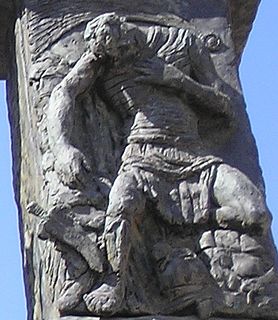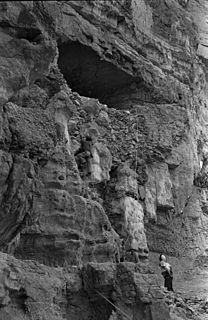 W
WThe Bar Kokhba revolt, known by Romans as the 'Jewish Expedition', was a rebellion by the Jews of the Roman province of Judea, led by Simon bar Kokhba, against the Roman Empire. Fought circa 132–136 CE, it was the last of three major Jewish–Roman wars, so it is also known as The Third Jewish–Roman War or, The Third Jewish Revolt. Some historians also refer to it as the Second Revolt of Judea, not counting the Kitos War, which had only marginally been fought in Judea.
 W
WAkiva ben Yosef, also known as Rabbi Akiva, was a leading Jewish scholar and sage, a tanna, of the latter part of the first century and the beginning of the second century. Rabbi Akiva was a leading contributor to the Mishnah and to Midrash halakha. He is also sometimes credited with redacting Abraham's version of the Sefer Yetzirah, one of the central texts of Jewish mysticism. He is referred to in the Talmud as Rosh la-Hakhamim "Chief of the Sages". He was executed by the Romans in the aftermath of the Bar Kokhba revolt.
 W
WBar Kokhba Revolt coinage were coins issued by the Judaean rebel state, headed by Simon Bar Kokhba, during the Bar Kokhba revolt against the Roman Empire of 132-135 CE.
 W
WBar Kokhba weights are weights that were used during the Bar Kokhba revolt. Of the seven weights found so far, six weights originated from the antiquities market, and only one was found in an archeological survey.
 W
WSimon ben Kosevah, or Cosibah, known to posterity as Bar Kokhba, was a Jewish military leader who led the Bar Kokhba revolt against the Roman Empire in 132 CE. The revolt established a three-year-long independent Jewish state in which Bar Kokhba ruled as nasi ("prince"). Some of the rabbinic scholars in his time imagined him to be the long-expected Messiah. Bar Kokhba fell in the fortified town of Betar.
 W
WBetar fortress was an ancient, terraced farming village in the Judean highlands. The Betar fortress was the last standing Jewish fortress in the Bar Kokhba revolt of the 2nd century CE, destroyed by the Roman army of Emperor Hadrian in the year 135.
 W
WCave of Horror is the nickname given to what archaeologists have catalogued as Nahal Hever Cave 8 (8Hev) of the Judaean Desert, Israel, where the remains of Jewish refugees from the Bar Kokhba revolt were found.
 W
WThe Cave of Letters is a cave in Nahal Hever in the Judean Desert where letters and fragments of papyri from the Roman Empire period were found. Some are related to the Bar Kokhba revolt, including letters of correspondence between Bar-Kokhba and his subordinates. Another notable bundle of papyri, known as the Babatha cache, comprises legal documents of Babatha, a female landowner of the same period.
 W
W"Publius Aelius Hadrianus", Roman emperor.
Syria Palaestina was the name given to the Roman province of Judea by the emperor Hadrian following the suppression of the Bar Kokhba revolt in 135 CE.
 W
WA Zuz was an ancient Jewish silver coin struck during the Bar Kochba revolt, as well as a Jewish name for the various types of non-Jewish small silver coinage, used before and after the period of the revolt. The name was used from the Greek era of drachmas, through the Roman era of Denarius, and then as the quarter denomination of Bar Kochba coinage. The Jewish insurrectionists' zuz were overstruck on Roman Imperial denarii or Roman provincial drachmas of Vespasian, Titus, Domitian, Trajan and Hadrian. Four Zuzzim, denarii or drachmas make a Shekel, a Sela or a Tetradrachm.